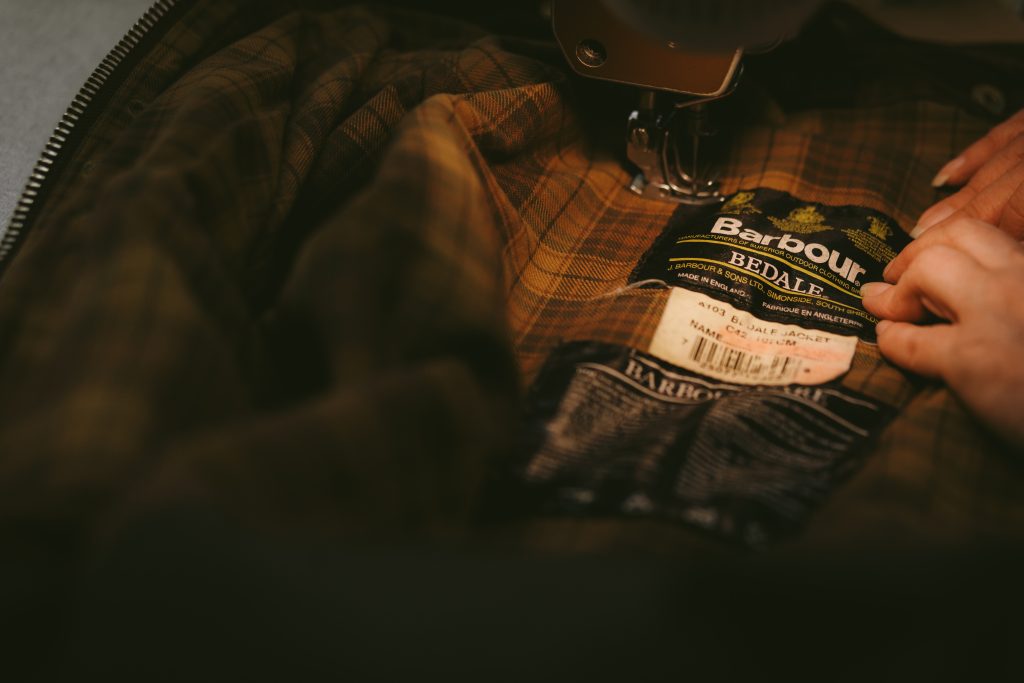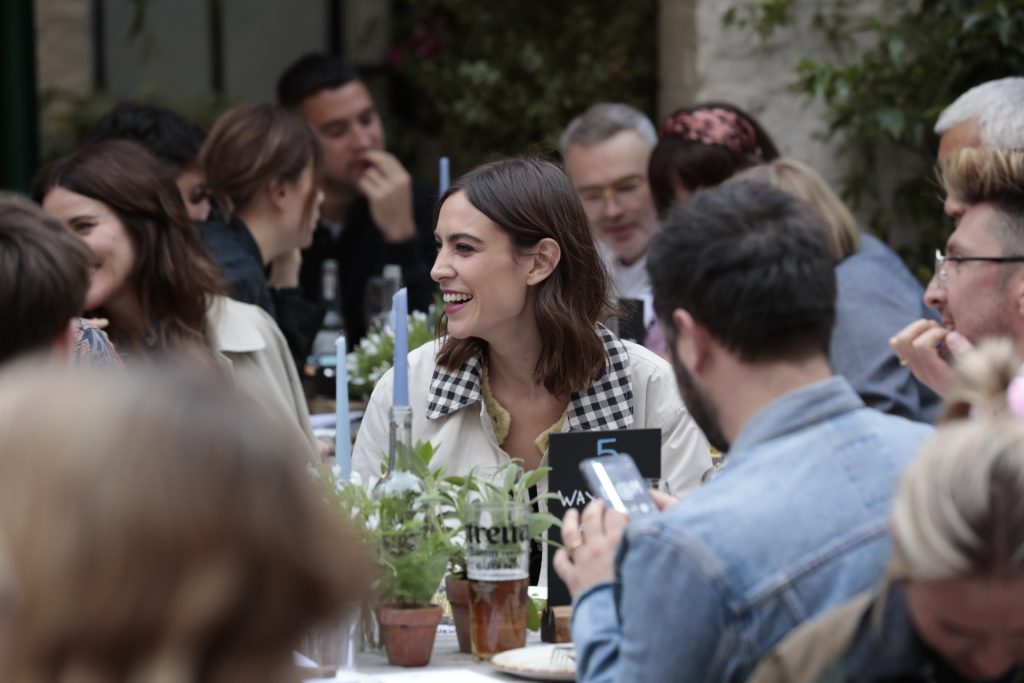Factory Visit: Barbour, England
For the heritage brand, longevity is the most crucial component behind more sustainable fashion

Whether brands are developing new materials (or simply renaming existing ones), changing distribution models or talking about eco-friendly packaging, truly sustainable fashion is a myth. There are, however, ways to approach apparel in more thoughtful and eco-conscious ways. For iconic British clothier J. Barbour & Sons—better known as Barbour—the future is clear and rooted in the past.

A Barbour jacket is one of the few garments in menswear so classic that it transcends time and place. It makes as much sense on a farmer as it does on an aristocrat and transitions seamlessly from city to country. The brand originated in England’s agrarian north east as a purveyor of practical coats to the country set, and in time, expanded into the closets of the country’s posh circles. Today, the jacket is an international symbol of the enduring appeal of heritage. A Barbour jacket telegraphs style without trying too hard, practicality without sacrificing panache and a sense that the styles of yesterday are still relevant to today. It’s that longevity that informs their contemporary practices.

On a recent visit to the Barbour headquarters in South Shields—where it was founded in 1894 and has remained there ever since—a few miles from Newcastle-Upon-Tyne, we were given a chance to explore where (a portion of) these jackets come from and the Wax for Life program which encompasses the brand’s ethos moving forward. It’s an ethos rooted in the belief that longevity is the most crucial component to the concept of more sustainable fashion.

Barbour’s constellation of apparel and accessories is produced in factories around the world, from Turkey and China to Indonesia. However, the quintessential Bedale and Beaufort jackets are still made in England, painstakingly cut and pieced together by the hands of staff who have worked there, in some instances, for generations.

The journey begins with the unspooling of giant rolls of waxed cotton from Dundee, precisely stacked one on top of the other before a saw hand-slices each element of the jacket. From there, pieces travel from seamstress to seamstress, moving down the production line. Complicated welts, pockets, linings and collars are executed by hand with an élan and precision that can only come from years and years of experience. Slowly, as the pieces work their way up and down the various assembly lines, the finished pieces come to life. Each jacket takes about 60-65 minutes to make, depending on the style and detail, and 36 different cutters, preppers, sewers and finishers are involved in the process.

It isn’t just the production of jackets that makes Barbour’s South Shields factory unique; it’s the welcoming home of them, too. Just around a corner from the main factory floor sits a dedicated repair shop, where racks and racks of Barbour jackets from around England are sent back to await repairs. There are similar localized repair shops in Europe and in North America so jackets don’t need to be shipped across the globe again and again.
Some need just a basic re-wax or a small patch, while others require more complex repairs. As opposed to the assembly lines where it takes dozens of people to execute a single jacket, the repair shop entrusts each piece to a single technician who lovingly oversees each detail. It’s clear from looking through the racks of repairs—newer pieces, older pieces, special collaboration pieces from years ago—that owning a Barbour is like owning a piece of living history. These jackets are worn by their owners for years on end, often passed down from parents to children, the passage of time leaving behind a unique patina on each. The repair shop has worked on jackets as old as from the 1950s. There’s a certain cache that comes from a deeply broken-in Barbour, and Barbour offering repairs only bolsters the idea that these jackets are an investment that only gets better with wear.

This concept is further explored upstairs from the main factory floor in the Wax for Life room, a space where friends of the brand are invited to experience the various aspects that make a Barbour jacket a lifelong investment. There are a few rows of archive pieces pulled from Barbour’s 120-year history and several examples of Re-Loved jackets which come from a program where customers turn in their well-worn jackets to Barbour stores or participating Nordstrom locations, receive an $80 voucher to purchase a new one and then the pre-owned jackets are painstakingly laundered, restored and offered for sale as upcycled versions of their former selves. The final Re-Loved products are offered for sale at select Barbour stores and are instant collectors items—often featuring calico-style panels pulled from various jackets. Each one-of-a-kind Re-Loved jacket is unique and, in some instances, offered at a higher retail price than if you were to purchase a new jacket altogether.

At the heart of the Wax for Life room is a demonstration space, anchored by an enormous table outfitted with integrated heating elements to warm up each jacket. Melted wax is carefully applied via sponge in broad strokes, first along the seams and then by filling in each panel. It’s so easy that anyone can learn to do it. Barbour has offered re-waxing and repair services since 1921, and tubs of wax can be purchased for a nominal price so customers can re-wax their own jackets—and if you don’t have a factory-grade heated table to wax your Barbours at home, then a flat surface on a sunny summer day will do just fine.
Obviously the production side of things has to do with materials, and where things come from, and how the fashion industrial complex gets them into consumers’ hands, but seeing this family-owned business in person underscores a human dimension. A Barbour jacket is not just about what you’re buying, but how to care for and protect what you already have.
Images courtesy of Barbour












